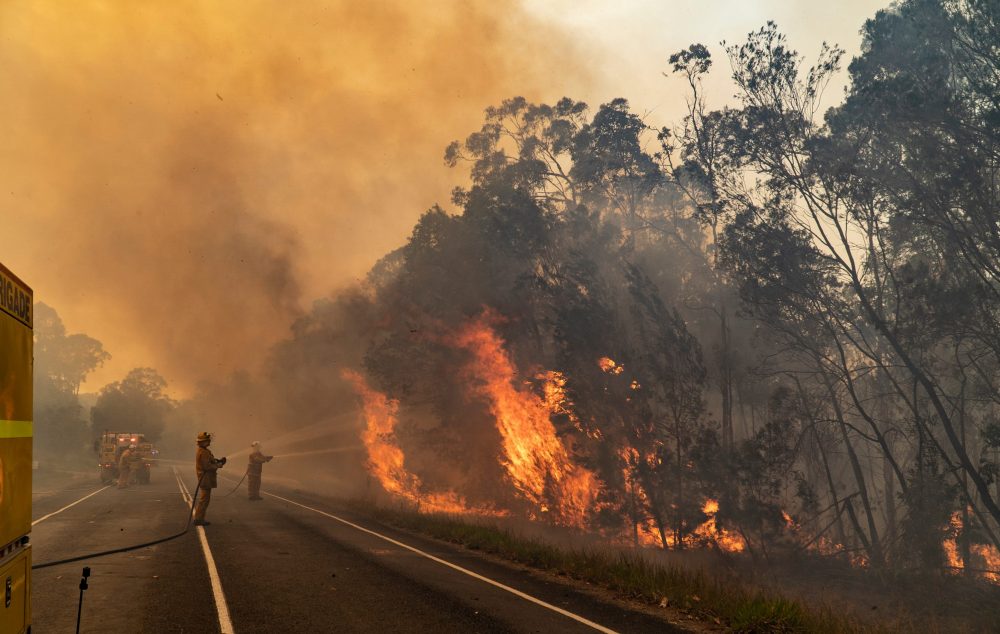Demystifying BAL Reports: A Guide to Comprehending Your Residential property's Bushfire Threat
Demystifying BAL Reports: A Guide to Comprehending Your Residential property's Bushfire Threat
Blog Article
Navigating Shrub Fire Defense Rules With BAL Report
Central to this endeavor is the Bushfire Strike Level (BAL) record, a critical document that analyzes the prospective exposure of a residential or commercial property to bushfire. By diving right into the complexities of BAL assessments and their effects for developing compliance, stakeholders can proactively manage bush fire threats and secure homes against possible risks.
Understanding Shrub Fire Security Laws
To effectively browse the complexities of bush fire security regulations, it is necessary to have a clear understanding of the regulating guidelines and requirements in place. Shrub fire defense guidelines are essential for safeguarding properties and lives in locations susceptible to bushfires. These regulations establish the criteria and methods that homeowner need to comply with in order to reduce the threats linked with bushfires.

Importance of BAL Evaluations
Recognizing the significance of BAL assessments is crucial in making certain conformity with bush fire protection policies and properly alleviating the threats connected with bushfires. BAL assessments, which identify the Bushfire Assault Degree of a building, are critical for designing suitable bush fire security actions tailored to the details danger account of the website. By reviewing elements such as plants type, distance to potential fire hazards, and incline of the land, BAL assessments supply useful insights into the level of danger a residential or commercial property encounters during a bushfire occasion.

Implications for Building Conformity
Navigating with building conformity demands in conformity with BAL evaluations is crucial for ensuring frameworks are sufficiently fortified versus the risks postured by bushfires. Frameworks that fall short to fulfill the necessary compliance standards are at a greater risk of enduring damages or destruction throughout a bushfire event.
Making sure structure compliance involves cautious planning, building, and upkeep to alleviate the possible effect of bushfires. It needs a complete understanding of the BAL rating assigned to the residential or commercial property and executing the proper measures to improve its fire security capabilities.
Managing Bush Fire Dangers Properly
Given the critical relevance of building compliance in strengthening frameworks versus bushfire threats, properly taking care of these dangers requires a comprehensive strategy that focuses on proactive reduction methods. To begin, performing detailed danger analyses is vital. Understanding the details vulnerabilities of a building in connection with bushfires permits tailored threat reduction plans. This involves studying variables such as the residential property's area, bordering plant life, topography, and dominating weather. Implementing proper vegetation Clicking Here monitoring techniques is one more essential aspect of efficient threat monitoring. Clearing flammable vegetation, developing defensible spaces, and making sure appropriate upkeep can substantially decrease the danger of fire infecting the building. Spending in fireproof building materials and building and construction strategies can enhance the framework's ability to stand up to coal strikes and direct flame contact. Additionally, practicing an emergency situation and developing action plan is essential for ensuring that locals understand exactly how to react swiftly and safely in case of a bushfire. By combining these positive steps, homeowner can effectively take care of bushfire threats and increase the safety and security of their owners and frameworks.
Practical Tips for Homeowners and Developers
Effectively handling bushfire risks as a home owner or designer demands executing sensible mitigation approaches tailored to the building's particular susceptabilities and surroundings. One vital tip is to preserve a well-maintained defensible area around frameworks, generally a minimum of 30 meters in risky areas. This area needs to be clear of combustible vegetation, debris, and various other combustible materials that can potentially fuel a fire. In addition, choosing fireproof building products can dramatically enhance the residential property's ability to stand up to coal attacks and direct fire call. Ensuring that roofs, windows, and helpful site wall surfaces are created or upgraded to meet appropriate bushfire security requirements is essential.
Furthermore, creating an emergency situation plan and practicing discharge drills with household renters, staff members, or participants can save lives in case of a bushfire. Remaining notified about local fire threat scores, weather problems, and emergency alerts is additionally essential for making prompt choices to shield life and residential property. Finally, engaging with neighborhood fire authorities, area groups, and professionals experienced in bushfire monitoring can offer beneficial assistance and assistance in developing thorough bushfire security approaches.
Verdict
In conclusion, browsing bush fire protection laws with a BAL report is essential for guaranteeing structure conformity and managing bush fire dangers properly. Understanding the value of BAL analyses and following useful pointers can help house check these guys out owners and developers minimize the impact of bush fires. By adhering to these laws and taking required precautions, people can produce more secure atmospheres on their own and their communities.
Trick parts of bush fire protection guidelines consist of the Bushfire Strike Level (BAL) evaluation, which determines the level of threat a building faces from bushfires. BAL evaluations, which figure out the Bushfire Strike Level of a residential property, are crucial for developing suitable bush fire security steps tailored to the details danger profile of the website. By reviewing aspects such as greenery type, range to possible fire dangers, and slope of the land, BAL assessments give useful insights into the degree of danger a residential property deals with during a bushfire occasion.

In final thought, browsing bush fire protection policies with a BAL report is vital for making certain structure conformity and taking care of bush fire risks efficiently.
Report this page